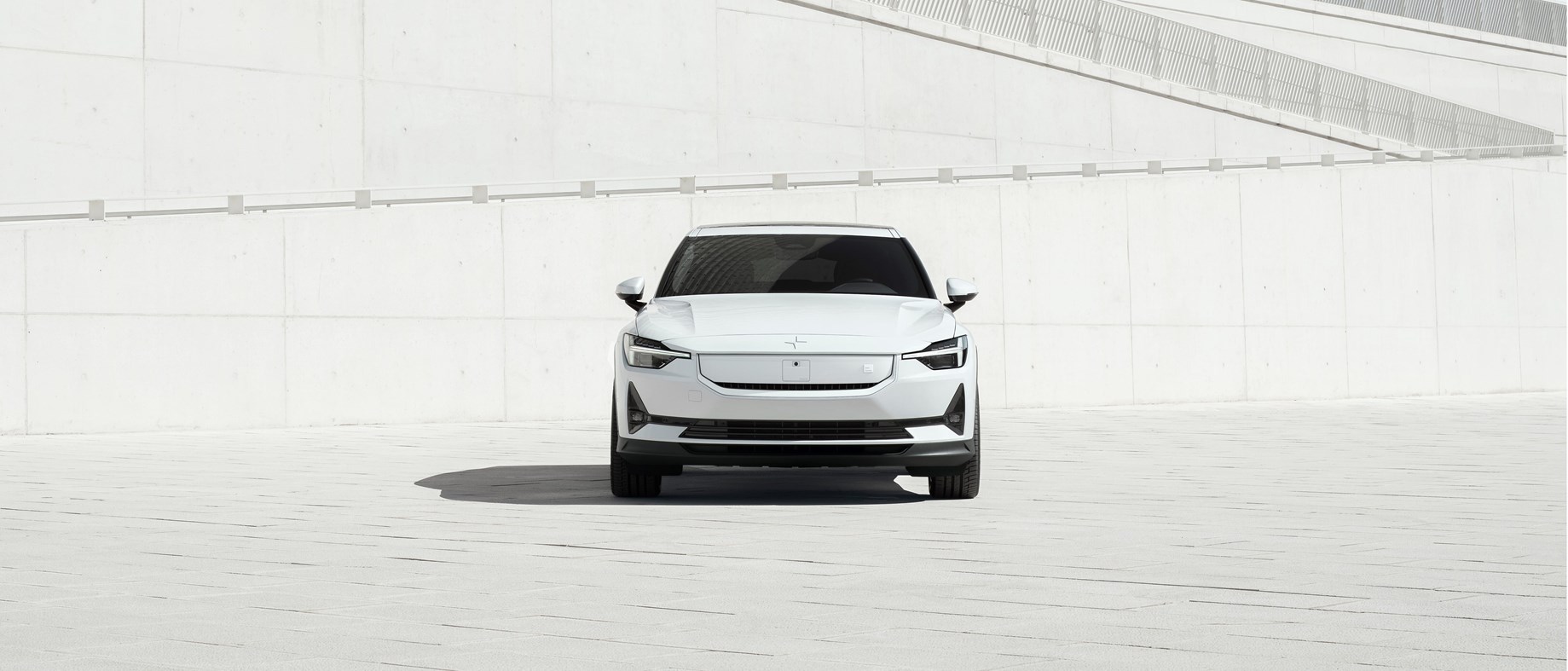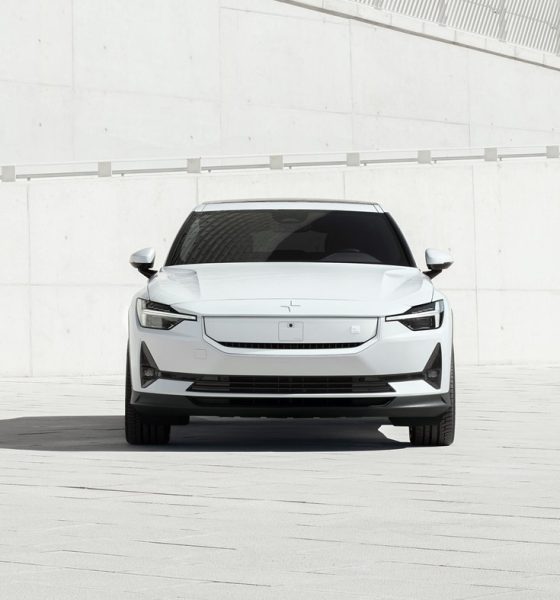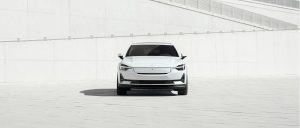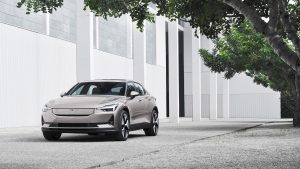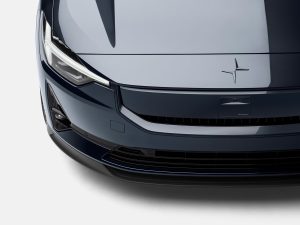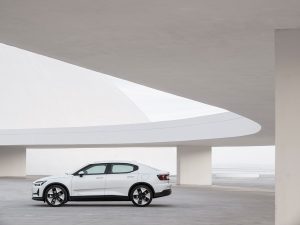Polestar has revealed its next-generation Polestar 2 sedan, which comes with a series of significant upgrades and some minor design changes.
Polestar is an innovative Swedish EV brand that has quickly gained a cult following in North America and Europe for its sleek and modern design, relentless dedication to sustainable manufacturing, and premium interior offerings which have clearly benefitted from the company’s relation to Volvo. Now, the company has released the next generation of its trendy Polestar 2 sedan, and with some significant performance upgrades, the vehicle has only become a more enticing offering.
Foremost in the company’s press release is the sad passing of the front-wheel-drive model; it will be missed. But in its place, Polestar has followed in the footsteps of Tesla and made rear-wheel-drive the standard drive for its vehicles. Along with the change in orientation, Polestar has designed an all-new drivetrain that means the RWD model could be pretty squirrely.
With Polestar’s new permanent magnet motor design, the single motor, RWD, standard range sedan comes with 300 horsepower (220kW), 361 pound-feet of torque, and a (while not blistering) respectable 0-60 of 6.2 seconds. Compared to the current generation sedan, this is an increase of over 60 horsepower and roughly 120 pound-feet of torque.
Luckily, this massive boost in power doesn’t come at the detriment of range. With the standard 69kWh battery, the RWD Polestar 2 achieves a range of 322 miles (518km), and with the optional 82kWh long-range battery, the sedan is capable of a staggering 395 miles (635km) of range. However, it should be noted that with the smaller standard-range battery, drivers are limited to a charging speed of 135kW instead of the 205kW the long-range battery is capable of.
Now, don’t hold your breath if you are like me and think this new upgrade has you ready to buy. Polestar will not sell the standard range sedan in North America, meaning that the base model vehicle’s price will likely rapidly increase in the next generation.
For those who are more interested in the higher performance trims, Polestar has not left you hanging. The dual-motor AWD variant of the Polestar 2, which is only available with the longer-range battery, receives an equally massive bump in power. A rear-biased system produces 422 horsepower (310kW) and 545 pound-feet of torque, rocketing the sport sedan to 60 in just 4.5 seconds. And if that isn’t enough, Polestar also sells an optional Performance Pack, which increases power to 476 horsepower and lowers the 0-60 to just 4.2 seconds.
Other upgrades to the next-gen vehicle focus on its driving tech and sustainability. Foremost, Polestar will include the “Smart Zone” on the vehicle, a panel of radar sensors, and cameras on the front of the car to aid in autonomous driving applications. While this sensor array was first displayed on the upcoming Polestar 3 SUV, it’s clear that the company will introduce it to more products as it continues to improve its autonomous driving offering.
The upgrade in sustainability is also quite significant, as Polestar has cut the carbon emissions per car produced by over a ton, equating to a far better lifecycle carbon footprint than the current generation.
Pricing has not yet been made available by Polestar for markets outside of Europe. Still, the Standard Range RWD model will be available for 50,190 euros (not available in North America), with the top-of-the-line Long Range AWD Performance model going for 64,690 euros ($70,315). The base model that will be available in North America, the Long-Range RWD, coming in March of this year, sells for 53,890 euros ($58,569).
Following Tesla’s recent price cuts, the Polestar 2, despite its unique upgrades, comes off as quite the premium offering and may face some significant backlash for not following Tesla’s steps and lowering prices. And while the company may receive some help if it can assemble the vehicle at Volvo’s South Carolina facility, allowing it to qualify for the US Federal EV incentive, it would still be priced a full $10,000 more than the base Tesla Model 3. It remains unclear if the focus on sustainability and the more premium interior will attract customers from the EV juggernaut in North America or globally.
What do you think of the article? Do you have any comments, questions, or concerns? Shoot me an email at william@teslarati.com. You can also reach me on Twitter @WilliamWritin. If you have news tips, email us at tips@teslarati.com!

Elon Musk
Elon Musk and Tesla AI Director share insights after empty driver seat Robotaxi rides
The executives’ unoccupied tests hint at the rapid progress of Tesla’s unsupervised Robotaxi efforts.

Tesla CEO Elon Musk and AI Director Ashok Elluswamy celebrated Christmas Eve by sharing personal experiences with Robotaxi vehicles that had no safety monitor or occupant in the driver’s seat. Musk described the system’s “perfect driving” around Austin, while Elluswamy posted video from the back seat, calling it “an amazing experience.”
The executives’ unoccupied tests hint at the rapid progress of Tesla’s unsupervised Robotaxi efforts.
Elon and Ashok’s firsthand Robotaxi insights
Prior to Musk and the Tesla AI Director’s posts, sightings of unmanned Teslas navigating public roads were widely shared on social media. One such vehicle was spotted in Austin, Texas, which Elon Musk acknowleged by stating that “Testing is underway with no occupants in the car.”
Based on his Christmas Eve post, Musk seemed to have tested an unmanned Tesla himself. “A Tesla with no safety monitor in the car and me sitting in the passenger seat took me all around Austin on Sunday with perfect driving,” Musk wrote in his post.
Elluswamy responded with a 2-minute video showing himself in the rear of an unmanned Tesla. The video featured the vehicle’s empty front seats, as well as its smooth handling through real-world traffic. He captioned his video with the words, “It’s an amazing experience!”
Towards Unsupervised operations
During an xAI Hackathon earlier this month, Elon Musk mentioned that Tesla owed be removing Safety Monitors from its Robotaxis in Austin in just three weeks. “Unsupervised is pretty much solved at this point. So there will be Tesla Robotaxis operating in Austin with no one in them. Not even anyone in the passenger seat in about three weeks,” he said. Musk echoed similar estimates at the 2025 Annual Shareholder Meeting and the Q3 2025 earnings call.
Considering the insights that were posted Musk and Elluswamy, it does appear that Tesla is working hard towards operating its Robotaxis with no safety monitors. This is quite impressive considering that the service was launched just earlier this year.
Elon Musk
Starlink passes 9 million active customers just weeks after hitting 8 million
The milestone highlights the accelerating growth of Starlink, which has now been adding over 20,000 new users per day.

SpaceX’s Starlink satellite internet service has continued its rapid global expansion, surpassing 9 million active customers just weeks after crossing the 8 million mark.
The milestone highlights the accelerating growth of Starlink, which has now been adding over 20,000 new users per day.
9 million customers
In a post on X, SpaceX stated that Starlink now serves over 9 million active users across 155 countries, territories, and markets. The company reached 8 million customers in early November, meaning it added roughly 1 million subscribers in under seven weeks, or about 21,275 new users on average per day.
“Starlink is connecting more than 9M active customers with high-speed internet across 155 countries, territories, and many other markets,” Starlink wrote in a post on its official X account. SpaceX President Gwynne Shotwell also celebrated the milestone on X. “A huge thank you to all of our customers and congrats to the Starlink team for such an incredible product,” she wrote.
That growth rate reflects both rising demand for broadband in underserved regions and Starlink’s expanding satellite constellation, which now includes more than 9,000 low-Earth-orbit satellites designed to deliver high-speed, low-latency internet worldwide.
Starlink’s momentum
Starlink’s momentum has been building up. SpaceX reported 4.6 million Starlink customers in December 2024, followed by 7 million by August 2025, and 8 million customers in November. Independent data also suggests Starlink usage is rising sharply, with Cloudflare reporting that global web traffic from Starlink users more than doubled in 2025, as noted in an Insider report.
Starlink’s momentum is increasingly tied to SpaceX’s broader financial outlook. Elon Musk has said the satellite network is “by far” the company’s largest revenue driver, and reports suggest SpaceX may be positioning itself for an initial public offering as soon as next year, with valuations estimated as high as $1.5 trillion. Musk has also suggested in the past that Starlink could have its own IPO in the future.
News
NVIDIA Director of Robotics: Tesla FSD v14 is the first AI to pass the “Physical Turing Test”
After testing FSD v14, Fan stated that his experience with FSD felt magical at first, but it soon started to feel like a routine.

NVIDIA Director of Robotics Jim Fan has praised Tesla’s Full Self-Driving (Supervised) v14 as the first AI to pass what he described as a “Physical Turing Test.”
After testing FSD v14, Fan stated that his experience with FSD felt magical at first, but it soon started to feel like a routine. And just like smartphones today, removing it now would “actively hurt.”
Jim Fan’s hands-on FSD v14 impressions
Fan, a leading researcher in embodied AI who is currently solving Physical AI at NVIDIA and spearheading the company’s Project GR00T initiative, noted that he actually was late to the Tesla game. He was, however, one of the first to try out FSD v14.
“I was very late to own a Tesla but among the earliest to try out FSD v14. It’s perhaps the first time I experience an AI that passes the Physical Turing Test: after a long day at work, you press a button, lay back, and couldn’t tell if a neural net or a human drove you home,” Fan wrote in a post on X.
Fan added: “Despite knowing exactly how robot learning works, I still find it magical watching the steering wheel turn by itself. First it feels surreal, next it becomes routine. Then, like the smartphone, taking it away actively hurts. This is how humanity gets rewired and glued to god-like technologies.”
The Physical Turing Test
The original Turing Test was conceived by Alan Turing in 1950, and it was aimed at determining if a machine could exhibit behavior that is equivalent to or indistinguishable from a human. By focusing on text-based conversations, the original Turing Test set a high bar for natural language processing and machine learning.
This test has been passed by today’s large language models. However, the capability to converse in a humanlike manner is a completely different challenge from performing real-world problem-solving or physical interactions. Thus, Fan introduced the Physical Turing Test, which challenges AI systems to demonstrate intelligence through physical actions.
Based on Fan’s comments, Tesla has demonstrated these intelligent physical actions with FSD v14. Elon Musk agreed with the NVIDIA executive, stating in a post on X that with FSD v14, “you can sense the sentience maturing.” Musk also praised Tesla AI, calling it the best “real-world AI” today.
